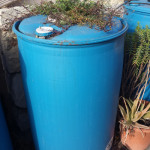About the Legume family
Members of the Legume family – peas, beans, and all their cousins – are superstar soil-builders. In partnership with certain beneficial bacteria, legumes can capture nitrogen from the atmosphere and lock it into the soil where other plants can access it.
Plant legumes with every season. Include them in virtually all your garden rotations. If you have a gap in your planting schedule, or it’s too early for your next crop, plant legumes. If you’re thinking about your garden plans and not yet ready to plant, plant legumes. Let them go to work as soil builders while you’re figuring out your full design.
Legumes need certain beneficial soil bacteria to do their nitrogen-fixing work. When you are establishing a new garden, or wish to boost the nitrogen-fixing capacity of your soil, dust your seeds with a bit of inoculant powder as you plant the seeds. Peas, beans, favas, peanuts, lentils, and cowpeas use one kind of bacteria. Alfalfa and clover work with a different kind, and garbanzo beans need their own. You can buy these special inoculants at the Bountiful Gardens website.
In Southern California’s year-round growing season, we must always be actively building our soil. Plus the legume harvest brings an important protein source to a vegetable-dominant diet. Try it!
Cool season legumes for Southern California:
- Peas: snowpeas, shelly peas, snap peas, soup peas
- Fava beans
- Clover, alfalfa
Warm season legumes for Southern California:
- Beans: green beans, dry beans, shelly beans, bush beans, pole beans, runner beans, lima beans, yard-long beans
- Garbanzos
- Lentils
- Soybeans
- Peanuts
- alfalfa
Hot weather legumes for Southern California:
- Cowpeas, a.k.a. black-eyed peas
- Garbanzos
- Drought-tolerant and heat-tolerant bean varieties from the desert Southwest

